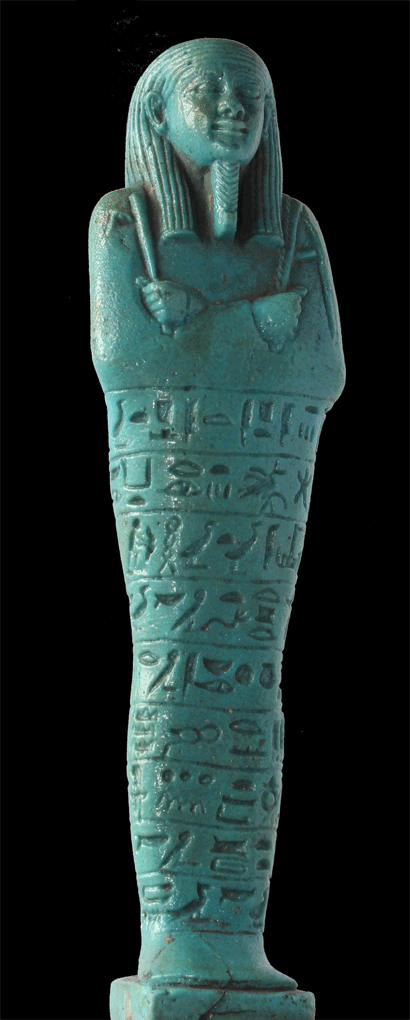|
|
|||||||
|
|
|
|
|
|
|
|
|
|
|
|||||||||||
|
|
|
|
|
|
|
|
|
|
|
|
|
|
|
||
|
|
|
|
|
|
|||||||||||||||||
|
Middle Kingdom
|
|
||||||||||||||||
|
|
|||||||||||||||||
|
The earliest shabtis dating from the 12th Dynasty of the Middle Kingdom should
be referred to funerary statuettes – the term shabti was introduced a little later. Although shroud-wrapped and
mummiform in shape, the arms, which would have been folded across the waist or
chest, are not always shown in the modelling and the hands carry no implements
and the figures bear no inscription.
They commonly wear a tripartite wig, but some wear a bag or bipartite wig [48] - [51]. The tripartite wig, as the name suggests, is divided into three parts called
lappets. Two extended behind the ears and down the sides of the face and down
to the breasts, with a third part going down the back as far as the lower area
of the shoulder blades. The bipartite wig was a little smaller in size, but
covered the ears and circled from one side, around the back, to the other side
in one piece with short lappets at the front giving the impression of one wig
being superimposed upon another.
Although without arms and hands, statuettes are also known that are inscribed -
often with the so-called offering formula (htp-di-nsw.t) and the name of the
deceased [52 -54]. In the 13th Dynasty some of the statuettes are modelled with the hands
protruding from a shroud to hold vases or symbolic amulets [55 - 56].
|
The shabtis were often placed in their own miniature coffins like the earlier
wax figures so they were considered as substitutes for the deceased’s mummy in case it was destroyed. This practice continued through to the early
18th Dynasty of the New Kingdom [57-58]. Some statuettes have longer inscriptions, mainly a simple version of the so
called ‘Shabti spell’, taken from Chapter 6 of the Book of the Dead that first appeared written on
coffins in the 12th Dynasty. It relates the deceased with Osiris, the god of
the Netherworld who rose to prominence at that time. The shabti spell gives
instructions of an agricultural nature for maintaining irrigation ditches and
canals to water the land and enable crops to be grown and cultivated, thus
providing the dead person with an everlasting supply of food. For this purpose,
model implements were sometimes supplied although it seems to be generally
considered that these appeared during the New Kingdom. It is also plausible
that in the late Middle Kingdom, when the shabti spell was introduced, these
tools – a pick and hoe for example - would be needed to undertake the tasks they were
enlisted to do. In this way, as well as representing the deceased, the concept
of shabtis as servant figures gradually began to develop. The deceased was
initially provided with only two or three shabtis although this number
gradually increased by the end of the Middle Kingdom but still only in single
numbers.
|
|
|||||||||||||||
|
|
|||||||||||||||||
|
|
|||||||||||||||||
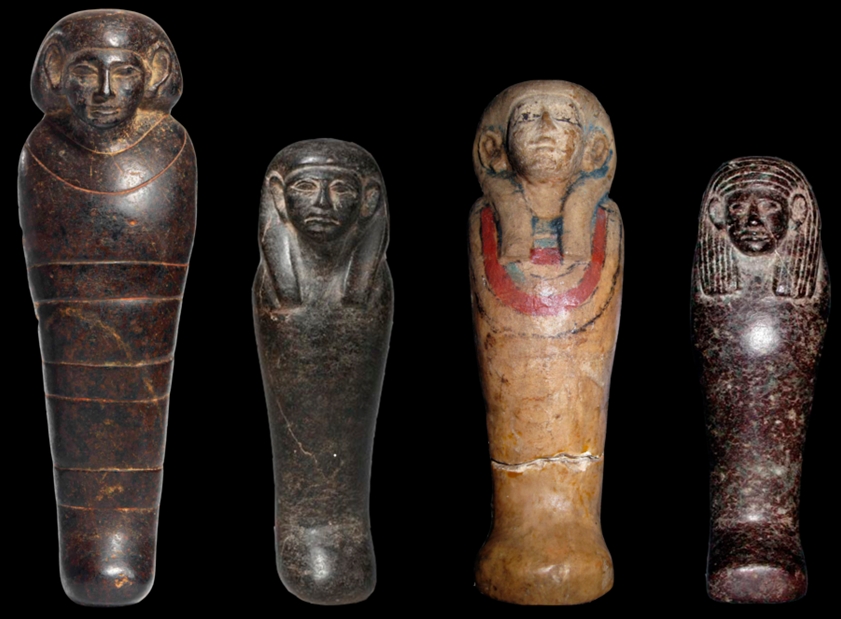 |
|
||||||||||||||||
|
|
|||||||||||||||||
|
|
|||||||||||||||||
|
[48] Anonymous (Art market, London)
[49] Anonymous (New York, MMA 20.2.7)
[50] Anonymous (Manchester, MM 5757)
[51] Anonymous (Cambridge, FTZ E.252.1899)
|
|
||||||||||||||||
|
|
|||||||||||||||||
|
|
|||||||||||||||||
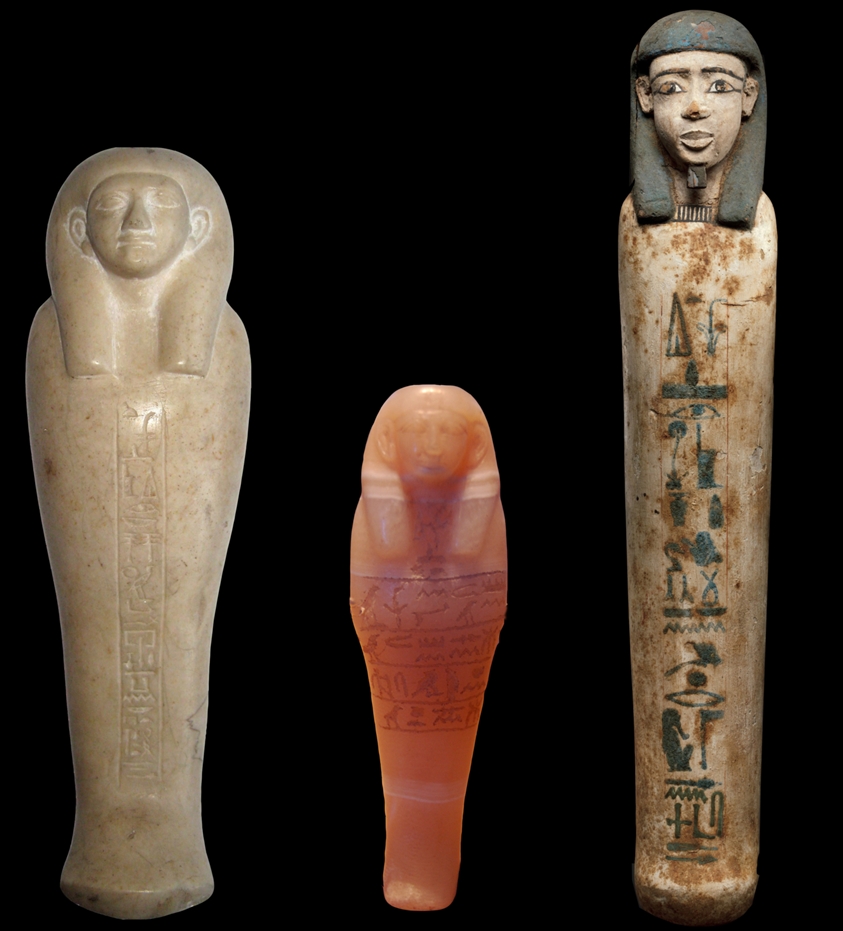 |
|
||||||||||||||||
|
|
|||||||||||||||||
|
|
|||||||||||||||||
|
[52] Henutwedjat (Manchester, MM 5344)
[53] NesMontu (Brooklyn, BM 34.997)
[54] Senebimi (New York,MMA 11.150.14)
|
|
||||||||||||||||
|
|
|||||||||||||||||
|
|
|||||||||||||||||
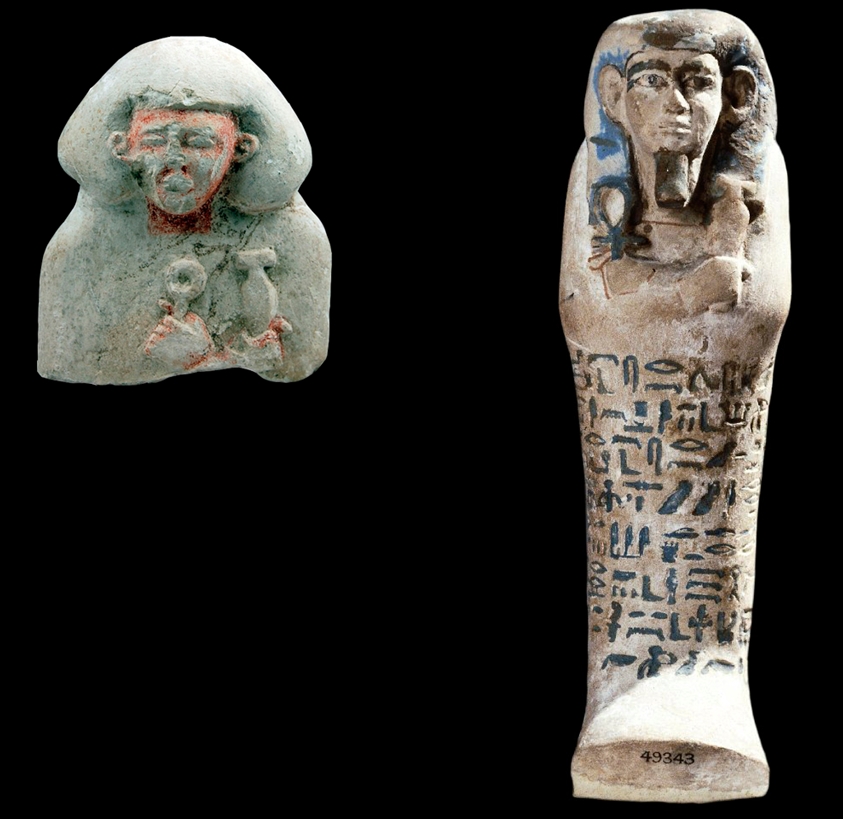 |
|
||||||||||||||||
|
|
|||||||||||||||||
|
|
|||||||||||||||||
|
[55] Fragment (Liverpool, WM 56.22.174)
[56] Renseneb (London, BM EA 49343)
|
|
||||||||||||||||
|
|
|||||||||||||||||
|
|
|||||||||||||||||
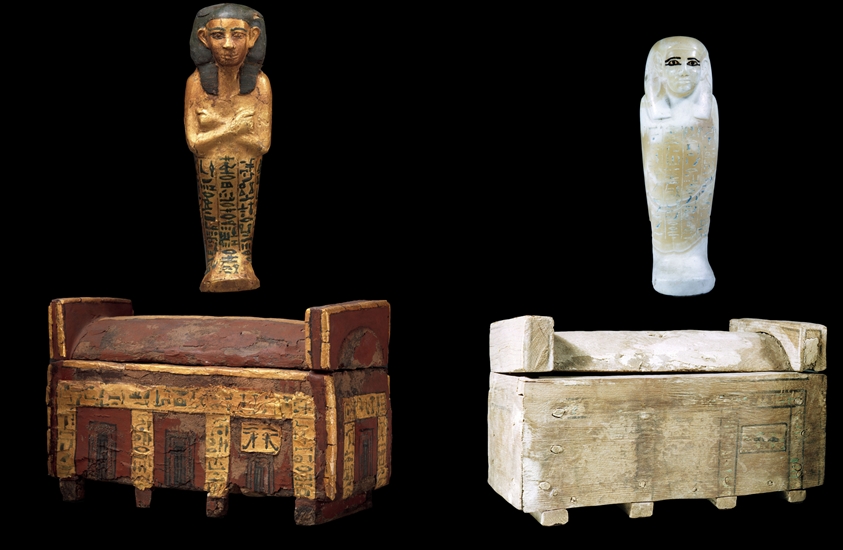 |
|
||||||||||||||||
|
|
|||||||||||||||||
|
|
|||||||||||||||||
|
[57] Wahneferhotep (New York, MMA 14.3.70, 14.3.69a/b)
[58] Bener (New York, MMA 44.4.5)
|
|
||||||||||||||||
|
|
|||||||||||||||||
|
|
|
|
|
|
|
|
|
|
|
|
|
|
|
|
|
|
|
